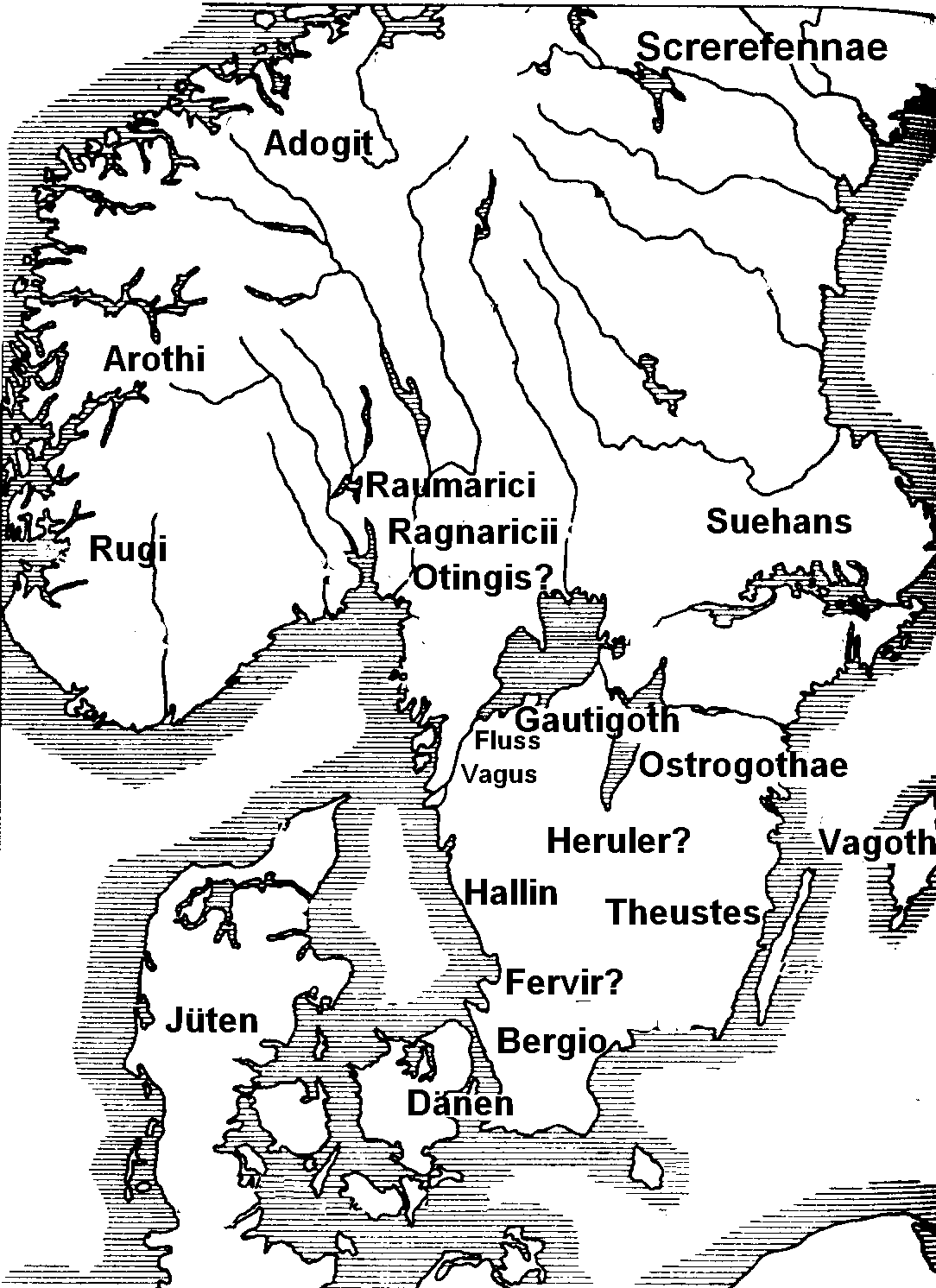Zen9 wrote: ↑Tue Oct 31, 2023 9:09 pm
Yes Langobardi (long beards) were supposedly originally the Winneli (welps) and from Southern Scandinavia.
Which conveniently meshes with the whole Hunding/Wulfing clan enmity.
But blond hair was not just a feature of Northern Europe, Greeks, Italians, even 'Africans' Mauritius, Massesili etc
Yes indeed, I’ll paste in what wiki has to say about the Hundings here for context for those not aware:
The Hundings (Old English: Hundingas, the "hound-clan") are a legendary tribe or clan in early Germanic sources, mostly mentioned due to their feud with the Wulfings (the "wolf-clan").
In the Poetic Edda, Hunding is a king of the Saxons, slain by Helgi Hundingsbane. The Gesta Danorum mentions a Danish king Helgo who slew Hundingus, king of Saxony, in single combat.[1] The historical core of the story is likely a conflict between the Eastern Geats (the wolf-clan) and the Lombards (the hound-clan).[2]
Hunding itself is a patronymic translating to "son of a hound", while the Hundings as a clan (sibb) would be the descendants of Hunding. Being named a "hound" or "dog" was by no means an insult in pre-Christian Germanic culture, but that the animal was rather a symbol of the warrior,[3] while in Christian Germanic culture, it became associated with heathendom, "heathen hounds" being an appellation especially of the pagan Vikings (cf. Ulfhednar).[4]
The name of Lamicho, king of the Lombards, may mean "little barker" (Harris 2004).
In Paulus' Historia Langobardorum, the Lombards terrorize their neighbors by spreading the word that they had dog-headed warriors, possibly a reference to ulfhednar. In Paulus's account, Lamicho is one of seven sons of a "prostitute" (meretrix), who is fostered by king Agelmund. This "prostitute" has been explained by Rudolf Much (followed by Höfler and others) as going back to a word for bitch. The Lombards' original ethnic name, Winnili, has also been connected with "savage dogs" by Much.
In Eddaic account of a feud between the Hundings and the Wulfings surrounding Helgi Hundingsbane may correspond to the Lombard story, and Malone (1926) explains the whole story of Lamicho as the Hunding version of the same feud. Jacob Grimm (1848) compared the story of Lamicho to the German legends of the origins of the Welfen, in German legend tracing their ancestry to fostered babes who were given the surname of "whelps" (Harris 2004). Hundings also appear in Sturlaugs saga starfsama, where they are a tribe of Cynocephali dwelling in Hundingjaland, which is apparently in much the same latitudes as Bjarmaland. These Hundings may relate to those Cynocephali mentioned by Adam of Bremen.
The Hundingas in Old English literature are mentioned in Beowulf, and in Widsith. The Widsith poem mentions the Hundings twice, once in a list of Germanic clans, as ruled by Mearchalf, and a second time among outlandish tribes and peoples, in the sequence mid hæðnum ond mid hæleþum ond mid hundingum "with heathens, heroes and dog-people", implying a re-interpretation of the name as a remote people of "heathen hounds".[5] This re-interpretation is complete in a later Anglo-Saxon manuscript on the Marvels of the East, where the Cynocephali are glossed as healf hundingas.[6]
It’s rather interesting how there’s so many stories, and in the case of the Lombards some scientific evidence, that places various continental Germanic tribes’ origins in Scandinavia.
Jordanes placed the Heruli origin in current day Sweden for instance. Here’s a map attempting to illustrate his placement of various peoples’ origins:

Jordanes, himself a romanized Goth, also put the Goth origin there in his work Getica:
The Getica begins with a discussion of a large island named Scandza, which faces the mouth of the Vistula river and had been described by the writers Claudius Ptolemy and Pomponius Mela. Jordanes reports this island to be the original home of many different peoples including the Goths, who have swarmed like bees from there (16-25). Jordanes commences the history of the Goths with the emigration of a Gothic king named Berig with three ships from Scandza to Gothiscandza (25, 94), in the distant past.
